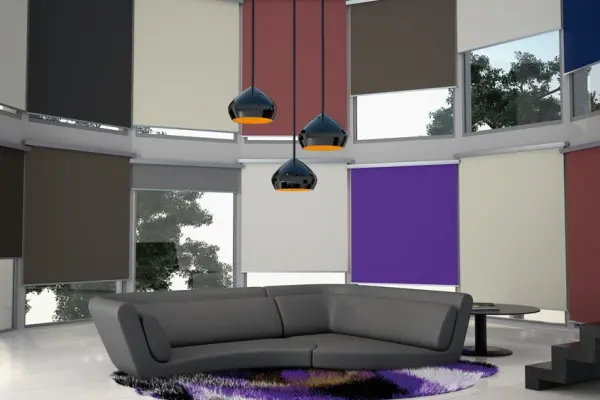Modern bamboo blinds and fabric blinds have become affordable solutions for home protection in yanıt System: 2025. According to industry research, the popularity of eco-friendly materials for sun protection systems is growing due to their functionality. High-quality blinds reduce energy costs for heating and cooling depending on climatic conditions.
Choosing window light filters is like selecting the right shoes for a long walk. In my practice with private clients, I often notice that customers underestimate the impact of quality sun protection systems on home comfort. According to the U.S. Department of Energy, properly selected window coverings can reduce heat loss by 25% in winter and decrease heat gain by 77% in summer. Prices range from $25 for basic models to $150 for premium options with automatic control.
Characteristics of Modern Materials
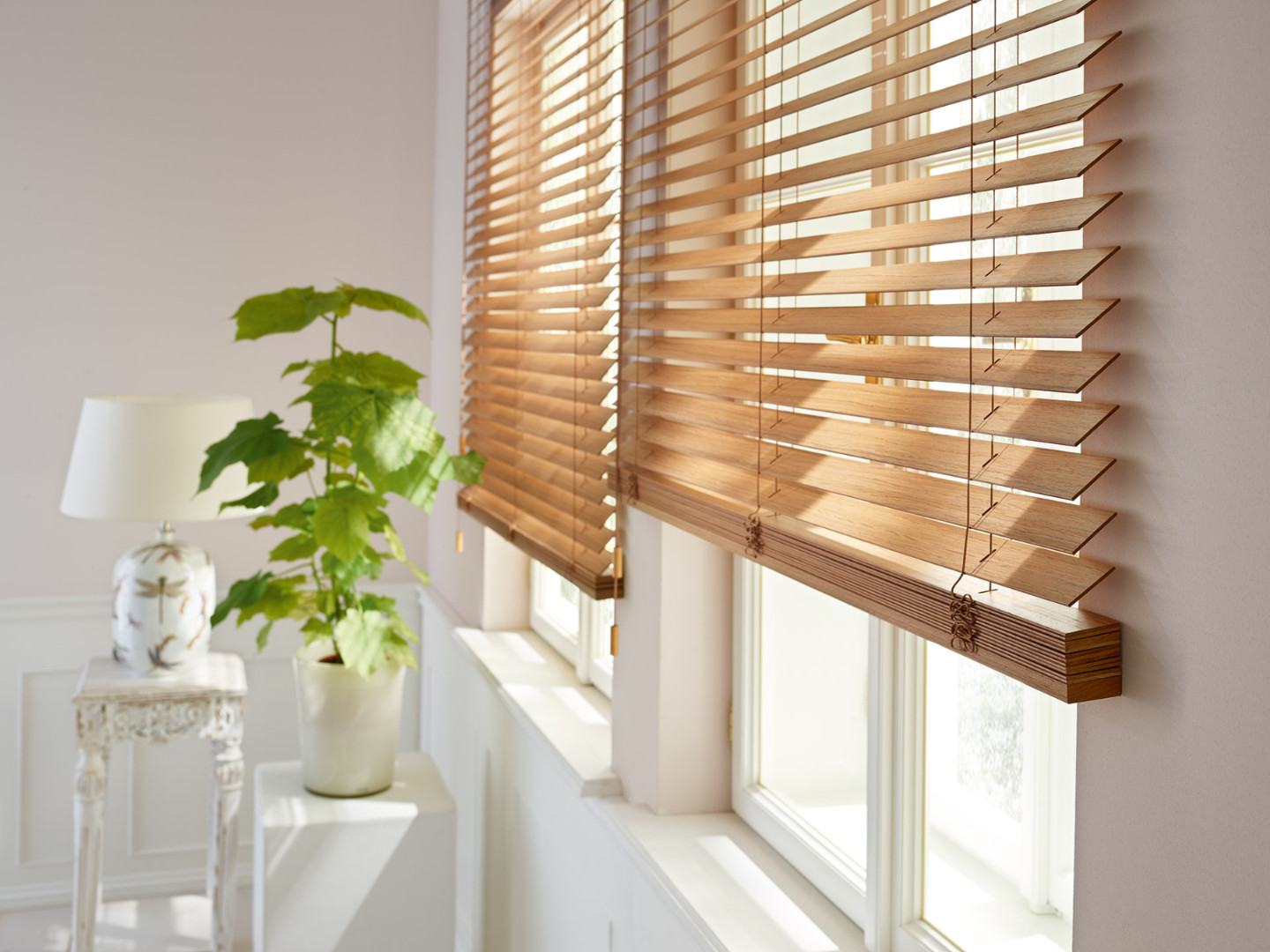 Horizontal bamboo blinds are distinguished by their natural durability. This material matures in just 3-5 years, unlike traditional wood. Vertical fabric blinds offer more design and color options. Both types effectively regulate lighting, but which one to choose for a specific room?
Horizontal bamboo blinds are distinguished by their natural durability. This material matures in just 3-5 years, unlike traditional wood. Vertical fabric blinds offer more design and color options. Both types effectively regulate lighting, but which one to choose for a specific room?
It should be noted that bamboo slats weigh 40% less than wooden counterparts while maintaining comparable strength, reducing the load on the curtain rod and simplifying the installation of roller shades on any window openings.
Blackout fabric roller shades block up to 99% of light, according to manufacturers' technical specifications. Cassette roller shades ensure a tight fit to the frame—like airtight packaging for your window. Mini-cassette blinds are suitable for limited spaces with openings up to 1.5 meters wide.
Modern-generation sun protection blinds combine functionality and aesthetics. In practice, I often observe that properly selected blinds for plastic windows become an integral part of the interior, not just a utilitarian element.
| Characteristic | Bamboo Blinds | Fabric Blinds |
|---|---|---|
| Service Life | 8-12 years | 5-8 years |
| Moisture Resistance | High | Medium |
| Light Protection | 70-85% | 60-99% |
| Price (per sq.m) | $35-80 | $25-120 |
| Maintenance | Dry cleaning | Washing/cleaning |
This table will help you choose the optimal sun protection system based on budget and operational requirements.
Technological Solutions of 2025
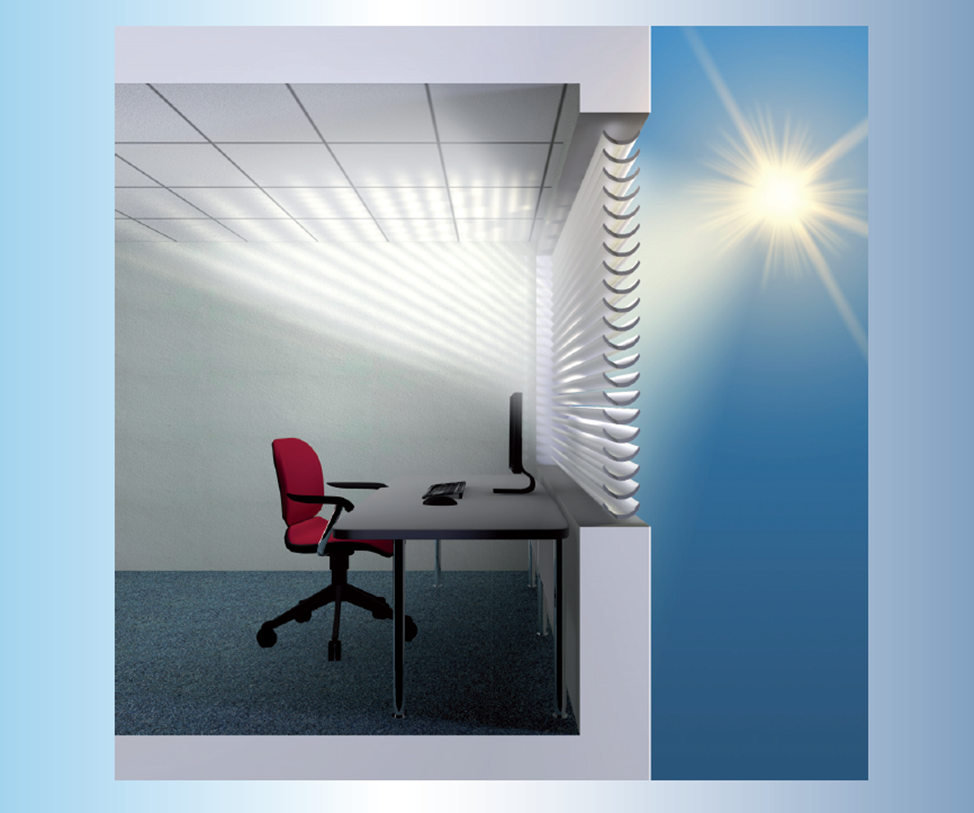 Smart blinds with light sensors automatically respond to changes in light flux and temperature. Integration with smart home systems allows control of blackout blinds via voice commands or a mobile app. Some models are equipped with solar panels for autonomous powering of electric drives—a technology of the future available today.
Smart blinds with light sensors automatically respond to changes in light flux and temperature. Integration with smart home systems allows control of blackout blinds via voice commands or a mobile app. Some models are equipped with solar panels for autonomous powering of electric drives—a technology of the future available today.
Drill-free blinds have become popular among renters. Magnetic mounts can support up to 2 kg, sufficient for lightweight fabric structures. Cordless systems ensure safety for children and comply with EN 13120 requirements for cord safety in window coverings.
The price for protective blinds with automation ranges from $120 to $300 per unit for a standard size of 1x1.5 meters. Thus, investments in smart systems pay off within 3-5 years through energy savings and ease of operation, depending on the region and tariffs.
How Blinds Improve Indoor Climate in Different Rooms
For kitchens, blinds with high moisture resistance—aluminum or bamboo models with protective coatings—are suitable. Aluminum or bamboo models are resistant to steam and grease. Bedrooms require blackout blinds for complete darkening—healthy sleep is worth more than any money.
Children’s rooms require safe mechanisms without small parts or sharp edges, in accordance with GOST 30494-2011. Considering the design features of modern windows, vertical blinds are ideal for panoramic glazing up to 3 meters high. Sash-mounted blinds are effective for skylights and non-standard openings.
Reflective coatings reduce room temperature by 3-5°C on hot days by reflecting infrared radiation. Guide rails ensure smooth movement even at a tilt of up to 45 degrees. In one recent project, this solution completely eliminated the issue of overheating in a children’s room under the roof.
Seasonal factors are important: in summer, blinds protect against overheating, while in winter, they provide additional insulation due to the air gap between the fabric and the glass. Adjusting the slat angle optimizes lighting year-round.
Technical Aspects of Installing Bamboo Blinds
 Blinds for plastic windows require special mounting brackets. Not always simple. But effective. The lifting mechanism must withstand the structure’s weight with a 30% strength margin. The control chain is placed on the right or left, as per the customer’s preference.
Blinds for plastic windows require special mounting brackets. Not always simple. But effective. The lifting mechanism must withstand the structure’s weight with a 30% strength margin. The control chain is placed on the right or left, as per the customer’s preference.
It is known that accurate measurements are the foundation of successful blind installation. In one project last season, a 2 cm measurement error led to the need to redo the entire structure. Therefore, I recommend entrusting this task to professionals or thoroughly studying the instructions.
In 2024, our team installed a combined system in a 250 sq.m suburban house: 50mm bamboo blinds for the living room (cost $340), blackout fabric blinds for three bedrooms ($180 each), and smart blinds with light sensors for the kitchen ($420). The owner, James M. from suburban Denver, noted a $180 reduction in air conditioning costs over the summer season at an average temperature of +32°C and a 100% increase in privacy. Automatic control via the HomeKit app became the family’s favorite feature.
Blinds Selection Checklist
The right choice of blinds depends on seven key factors that determine the system’s functionality and durability.
- Room Purpose: bedrooms require blackout, kitchens need moisture resistance, children’s rooms need safety
- Window Orientation: southern windows need UV protection, northern ones need maximum light
- Window Size and Shape: narrow windows suit vertical blinds, wide ones suit horizontal
- Installation Method: in the opening, on the opening, or sash-mounted without drilling
- Budget: from $25 for basic to $150 for premium with automation
- Climate: humid regions favor bamboo, dry regions allow any material
- Interior Style: eco-style favors bamboo, minimalism favors fabric, classic favors wood
Following this checklist will help avoid mistakes during purchase and ensure maximum system functionality.
Brief Guide to DIY Blinds Installation
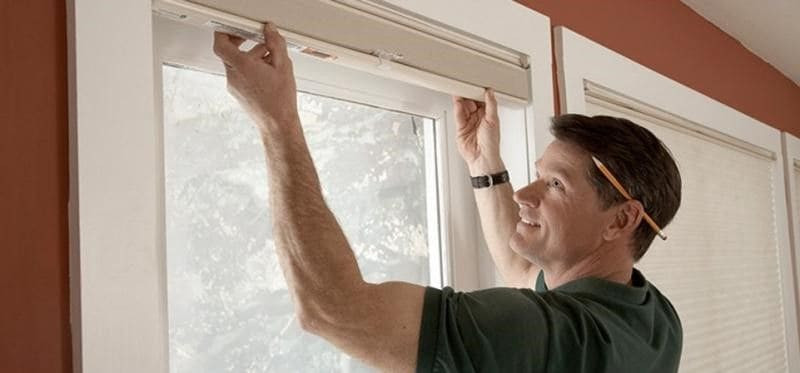 DIY blinds installation is accessible to everyone if basic rules are followed. You’ll need a tape measure, level, drill, screws, and brackets from the kit. Not always simple. But doable.
DIY blinds installation is accessible to everyone if basic rules are followed. You’ll need a tape measure, level, drill, screws, and brackets from the kit. Not always simple. But doable.
According to window systems expert Mark Anderson, “90% of blinds issues arise from inaccurate measurements. Measure three times, install once.” Accurate measurement is the foundation of successful blinds installation.
The main steps include measuring the opening at three points and marking the brackets with a level check. Next comes drilling holes and securing the lifting mechanism. It is known that testing all components before final installation saves time on rework and ensures the structure’s durability.
Free measurements by professionals are an alternative to DIY. Professional blinds installation takes 30-60 minutes per window, depending on the complexity of the structure and mounting type.
Blinds Care and Maintenance
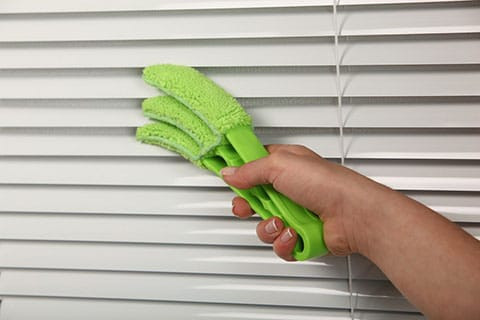 Proper care extends the service life by years. Bamboo blinds are cleaned weekly with a dry brush, avoiding wet treatment. Fabric models allow wet cleaning every 2-3 months with special solutions.
Proper care extends the service life by years. Bamboo blinds are cleaned weekly with a dry brush, avoiding wet treatment. Fabric models allow wet cleaning every 2-3 months with special solutions.
Mechanisms are lubricated with technical oil once a year for smooth chain operation and to prevent wear. In one project last season, neglecting this procedure led to system jamming after 18 months of use in high-humidity conditions. Regular maintenance is the key to the longevity of any window blinds.
With proper care, sun protection systems maintain functionality for 8-12 years without replacing main components, depending on material quality. Replacing individual slats costs 15-20% of a new structure, which is cost-effective for localized damage affecting less than 30% of the total area.
Climate significantly impacts material choice. In high-humidity regions, bamboo is preferable due to its natural moisture resistance. For dry climates, any options work without restrictions. Window orientation is also important—southern windows require enhanced UV protection through special coatings.
It’s worth noting that not all bamboo products are equally eco-friendly—according to a Euronews study, bamboo fiber processing may involve chemicals, so choose certified manufacturers. Can you buy eco-friendly bamboo blinds? Definitely yes, if you source from trusted suppliers with appropriate certifications.
Ordering fabric blinds should consider the room’s specifics and personal preferences.
The energy efficiency of high-quality blinds matches that of double-glazed windows, especially with reflective coatings and dense fabrics.
Modern blinds have evolved from simple sun protection devices into comprehensive light and privacy management systems. The right choice between bamboo and fabric options ensures comfort for years. Investments in quality sun protection systems pay off through energy savings and enhanced living comfort—a fact confirmed by the experience of thousands of homeowners.
